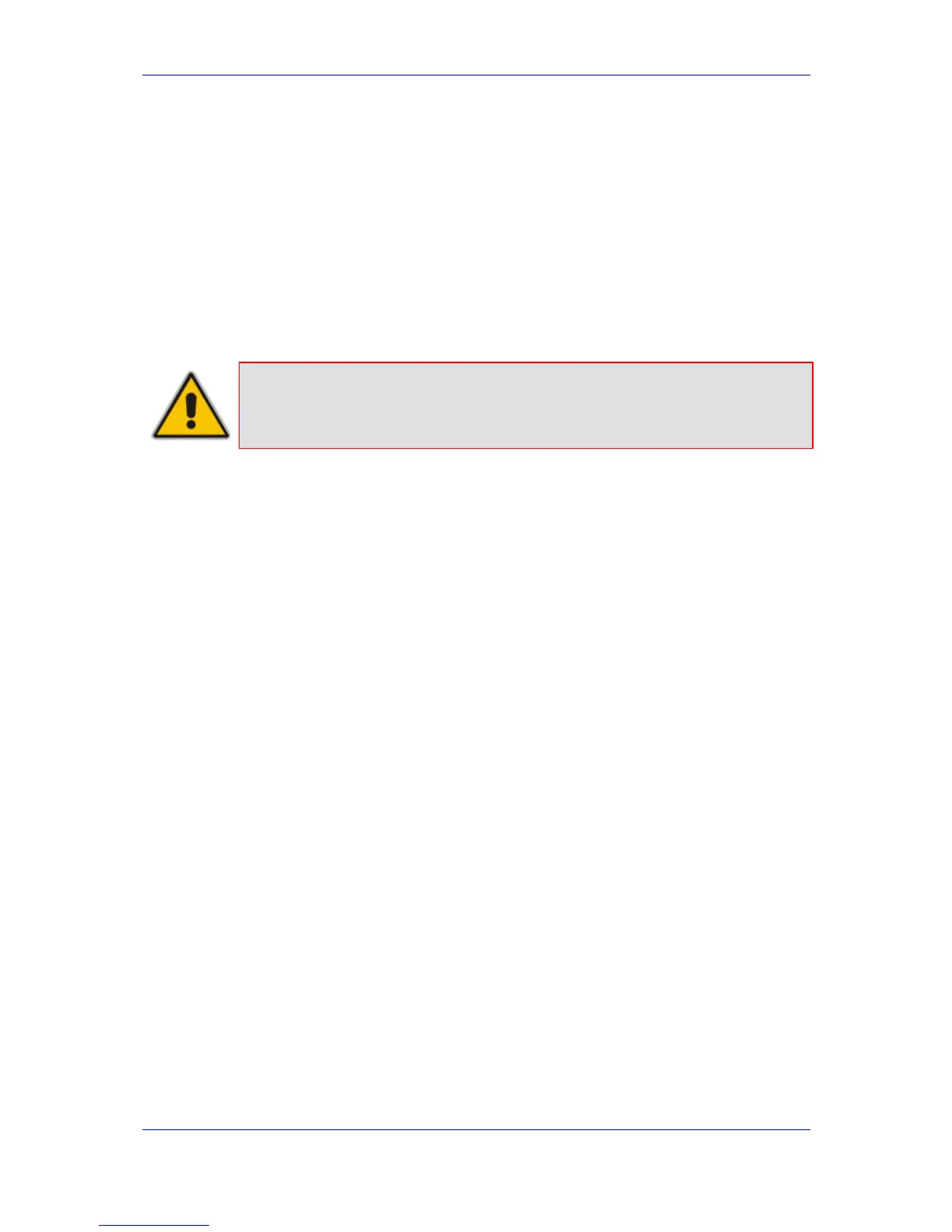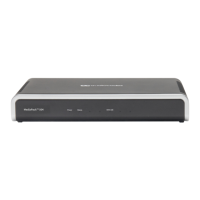Version 6.2 253 February 2011
SIP User's Manual 8. IP Telephony Capabilities
V22ModemTransportType = 0
V23ModemTransportType = 0
V32ModemTransportType = 0
V34ModemTransportType = 0
BellModemTransportType = 0
Additional configuration parameters:
• CodersGroup
• DJBufOptFactor
• EnableSilenceCompression
• EnableEchoCanceller
Note: This mode can be used for fax, but is not recommended for modem
transmission. Instead, use the modes Bypass (see ''Fax/Modem Bypass
Mode'' on page 250) or Transparent with Events (see ''Fax / Modem
Transparent with Events Mode'' on page 252) for modem.
8.2.6.2.8 RFC 2833 ANS Report upon Fax/Modem Detection
The device (terminator gateway) sends RFC 2833 ANS/ANSam events upon detection of
fax and/or modem answer tones (i.e., CED tone). This causes the originator to switch to
fax/modem. This parameter is applicable only when the fax or modem transport type is set
to bypass, Transparent-with-Events, V.152 VBD, or G.711 transport. When the device is
located on the originator side, it ignores these RFC 2833 events
Relevant parameters:
IsFaxUsed = 0 or 3
FaxTransportType = 2
FaxModemNTEMode = 1
VxxModemTransportType = 2
8.2.6.3 V.152 Support
The device supports the ITU-T recommendation V.152 (Procedures for Supporting Voice-
Band Data over IP Networks). Voice-band data (VBD) is the transport of modem, facsimile,
and text telephony signals over a voice channel of a packet network with a codec
appropriate for such signals.
For V.152 capability, the device supports T.38 as well as VBD codecs (i.e., G.711 A-law
and G.711 μ-law). The selection of capabilities is performed using the coders table (see
''Configuring Coders'' on page 118).
When in VBD mode for V.152 implementation, support is negotiated between the device
and the remote endpoint at the establishment of the call. During this time, initial exchange
of call capabilities is exchanged in the outgoing SDP. These capabilities include whether
VBD is supported and associated RTP payload types ('gpmd' SDP attribute), supported
codecs, and packetization periods for all codec payload types ('ptime' SDP attribute). After
this initial negotiation, no Re-INVITE messages are necessary as both endpoints are
synchronized in terms of the other side's capabilities. If negotiation fails (i.e., no match was
achieved for any of the transport capabilities), fallback to existing logic occurs (according to
the parameter IsFaxUsed).
Below is an example of media descriptions of an SDP indicating support for V.152.

